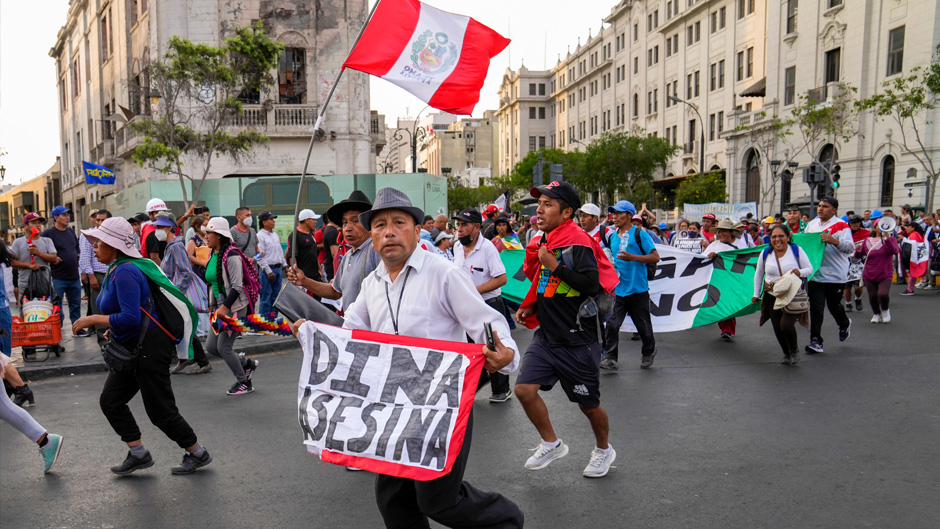Though it has been seeing some of the deadliest political turmoil in its modern history, Peru has hardly been on the radar in the daily media cycle. Some publications offer small glimpses of the country’s fight to salvage its young democracy, but the complexity of Peru’s current political transition has naturally made it difficult to condense the situation in a digestible way.
Consuelo Rios, a third-year University of Miami pre-med student with family members who have served and currently serve in prominent political positions in Peru, found that she had to take time to research and understand what exactly was happening.
“My mom worked with the agricultural department during Alberto Fujimori’s first term as president, and my aunt currently serves on the supreme court,” said Rios.
“We tend to visit family every year over there, and we happen to go around June or July when it’s election season in Peru. So, every time I go, there’s always something happening politically that gets ingrained in my mind,” she pointed out.
Fujimori served as Peru’s president from 1990 to 2000, and he continues to be a source of political controversy throughout the South American nation. He is often credited with significantly stabilizing Peru’s economy at a time of hyperinflation, while also curtailing domestic terrorism from communist guerilla group “Sendero Luminoso,” or Shining Path, according to media reports.
However, Fujimori also quickly became a notorious authoritarian figure. And in 2009, he was found guilty of human rights crimes that included the killing of 15 people and the kidnapping and assassination of 10 others, according to public records.
Though he was imprisoned, his daughter, Keiko Fujimori, also became a politician and ran for office several times. She ran and lost against Pedro Castillo, the country’s former president.
“Castillo ran as a proxy for someone by the name of Vladimir Cerrón, a communist ideologist who could not run again because of a previous criminal conviction,” explained Jaime Zusman, a retired physician and graduate student who was born in Peru and currently is finishing a thesis on a Peruvian philosopher who would later loosely inform many of the Shining Path’s ideologies.
“The right couldn’t really unite to get another candidate to run against Castillo, besides Fujimori’s daughter, and this was her third attempt to reach the presidency,” Zusman added. “But there’s such an anti-Fujimori segment of the population that is very strong, so there wasn’t a better candidate for Castillo to run and win against.”
Castillo, known for being one of Peru’s few political leaders representing its rural population, also lacks the typical education that past presidents have possessed. However, according to Rios, his identity as a rural and indigenous Peruvian seemed to outweigh his lack of qualifications.
“He captured the hearts of everyone on the outskirts of Lima, which is very sad because it shows how Peru’s education system doesn’t provide the same level of education on the outside,” Rios noted.
On Dec. 7, 2022, Castillo surprised the country by announcing his desire to dissolve the Peruvian congress after significant corruption allegations were made against him. The legislature voted in favor of his removal, and he was immediately ousted.
The political unrest that has unfolded since Castillo was removed from office and replaced by current president, Dina Boluarte, has engulfed almost all of Peru, resulting in closures of many tourist sites, including Machu Picchu, a delay in legislative procedures, and many deaths from the extent of the political violence.
According to Zusman, protestors want several things from the government in order to cease the demonstrations. These include calling for Boluarte, who stepped in after Castillo’s imprisonment, to step down; the drafting of a new constitution; the dissolution of congress; the next election to be moved up; and they want Castillo to be released from prison.
“These are the demands. But the problem is, they aren’t possible,” said Zusman. “It has not been possible to identify a leader behind this revolt, someone to negotiate with on these issues,” he added.
As the demonstrations in Peru continue, several dangers become apparent for the future. According to both Zusman and Rios, some of those dangers could be long-term closure of roads to rural provinces where most of the protests are taking place, lack of access to clean water and natural resources, a prolonged delay in congressional processes, and more.
But according to both Zusman and Rios, the most notable danger is that Peru could become the next country to be considered a failed democratic state.
“Castillo’s administration was basically communist,” said Rios. “He got a bunch of followers because so many people felt wronged by the people in power. And now you can really feel the tension when you visit.”
In terms of the significance of the political unrest, Zusman pointed out that eyes should be kept on Peru, especially because the turmoil might result in a large migrant exodus to the United States.
“Everyone is talking about Ukraine, for instance, because the U.S. has a dog in the fight,” said Zusman. “Nobody is talking about what is happening in Peru because it isn’t as economically strong, it doesn’t seem to affect Americans’ daily lives,” he said. “But the truth is that what’s going on is very grave; and if we aren’t careful, Peru could be the next Venezuela.”

